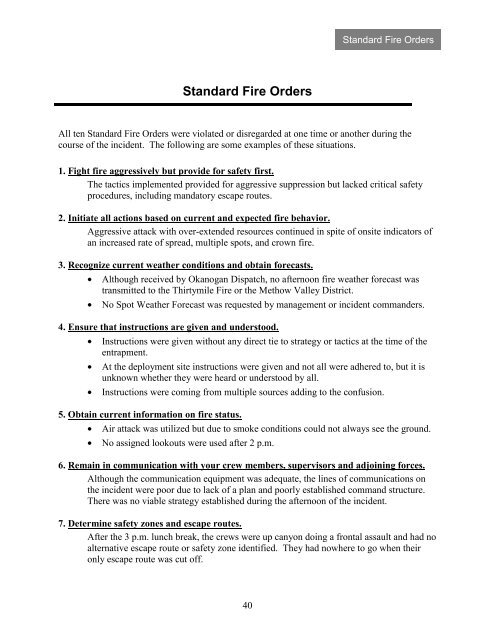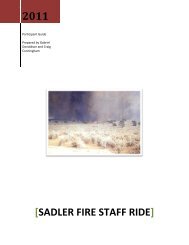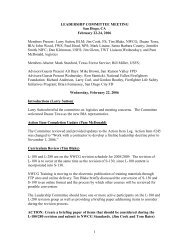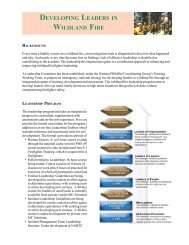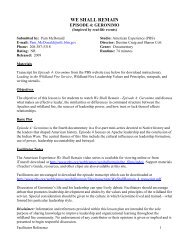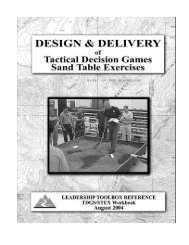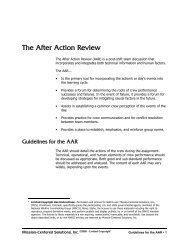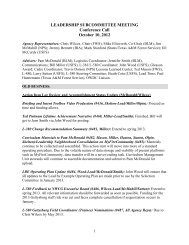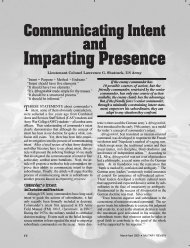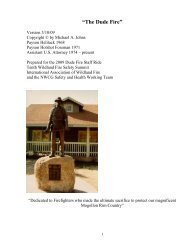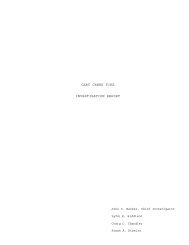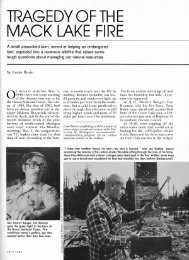Thirtymile Fire - USDA Forest Service
Thirtymile Fire - USDA Forest Service
Thirtymile Fire - USDA Forest Service
Create successful ePaper yourself
Turn your PDF publications into a flip-book with our unique Google optimized e-Paper software.
Standard <strong>Fire</strong> Orders<br />
Standard <strong>Fire</strong> Orders<br />
All ten Standard <strong>Fire</strong> Orders were violated or disregarded at one time or another during the<br />
course of the incident. The following are some examples of these situations.<br />
1. Fight fire aggressively but provide for safety first.<br />
The tactics implemented provided for aggressive suppression but lacked critical safety<br />
procedures, including mandatory escape routes.<br />
2. Initiate all actions based on current and expected fire behavior.<br />
Aggressive attack with over-extended resources continued in spite of onsite indicators of<br />
an increased rate of spread, multiple spots, and crown fire.<br />
3. Recognize current weather conditions and obtain forecasts.<br />
• Although received by Okanogan Dispatch, no afternoon fire weather forecast was<br />
transmitted to the <strong>Thirtymile</strong> <strong>Fire</strong> or the Methow Valley District.<br />
• No Spot Weather Forecast was requested by management or incident commanders.<br />
4. Ensure that instructions are given and understood.<br />
• Instructions were given without any direct tie to strategy or tactics at the time of the<br />
entrapment.<br />
• At the deployment site instructions were given and not all were adhered to, but it is<br />
unknown whether they were heard or understood by all.<br />
• Instructions were coming from multiple sources adding to the confusion.<br />
5. Obtain current information on fire status.<br />
• Air attack was utilized but due to smoke conditions could not always see the ground.<br />
• No assigned lookouts were used after 2 p.m.<br />
6. Remain in communication with your crew members, supervisors and adjoining forces.<br />
Although the communication equipment was adequate, the lines of communications on<br />
the incident were poor due to lack of a plan and poorly established command structure.<br />
There was no viable strategy established during the afternoon of the incident.<br />
7. Determine safety zones and escape routes.<br />
After the 3 p.m. lunch break, the crews were up canyon doing a frontal assault and had no<br />
alternative escape route or safety zone identified. They had nowhere to go when their<br />
only escape route was cut off.<br />
40


